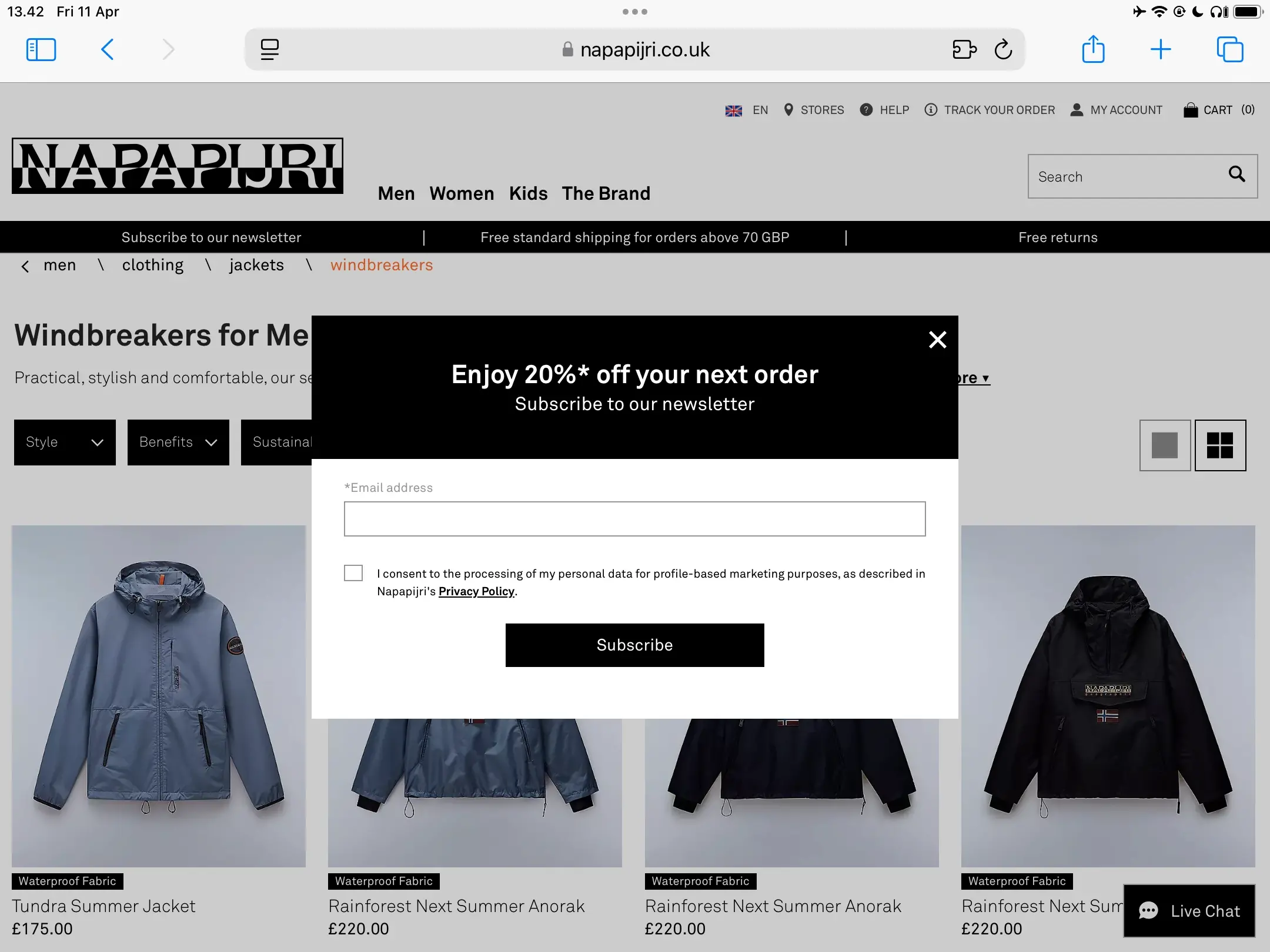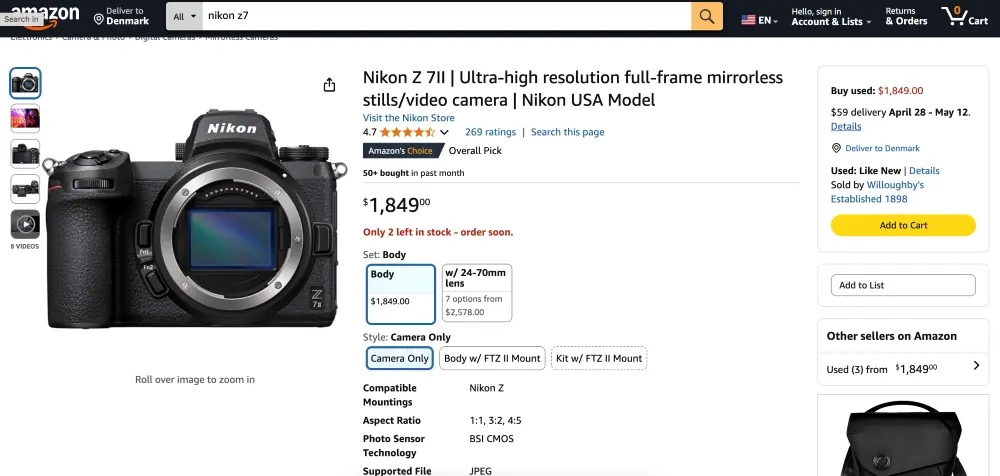When running an eCommerce business, you’ll need to deal with multiple challenges. One that affects every site owner is grappling with cart abandonment rates. Abandoned shopping carts can cost businesses trillions of dollars collectively, meaning that you’re missing out on serious money if you don’t have a strategy to recover lost customers.
The good news, however, is that you can do several things to reduce cart abandonment rates. What’s more, the buyers you do manage to convert can have pretty good customer lifetime values (CLVs). According to Analyzify, having an abandoned cart flow can result in repeat purchase rates (RPRs) of $3.65.
To reduce your eCommerce abandonment rate, you’ll need to understand why customers don’t complete their purchases in the first place. Once you have that information, you can develop initiatives to convert more buyers than you otherwise would have.
Keep reading to discover everything you need to know about eCommerce abandonment rates and how to reduce them.
What Is the Average eCommerce Cart Abandonment Rate?
According to Statista, the average eCommerce cart abandonment rate in 2025 is 70.19%. Since initially falling from a 2012 high of 71.98% to 68.07% in 2014, this percentage has slowly crept back up over the past decade.
Cart abandonment rates vary by industry and region. In North America, for example, abandonment rates are higher than the average (79.14%). Rates by industry are:
Luxury (81.68%)
Home and furniture (78.65%)
Fashion, accessories, and apparel (76.48%)
Beauty and personal care (72.04%)
Pet care and veterinary services had the lowest abandonment rate at 52.19%. Food and beverage, meanwhile, was the second lowest (58.23%). These statistics suggest that shoppers are more likely to not complete a purchase for items they may want but not need, as opposed to things that are absolute necessities.
Why Do Customers Abandon Their Carts in eCommerce?
Customers may abandon their carts for several reasons, though sometimes they do so out of their own desires. You may also experience high abandonment rates because of your user experience, so it’s important to understand both.
A Poor Website Experience
Part of building a strong eCommerce brand involves having a high-quality website. Not focusing on the user experience will almost always lead to worse conversion rates. Even worse, those lost customers probably won’t trust you enough to shop with you in the future.
A poor website experience can cover multiple factors:
- Low-quality hosting that slows down website speed and compromises security
- A lack of mobile optimization
- Bad product descriptions and low-resolution images
- Spelling and grammatical errors
- Clunky interfaces and slow loading speeds
Besides increasing your cart abandonment rate, a poor user experience will harm your brand in many other ways. Slow, bloated websites will often rank lower in search engines, meaning that many of your target customers won’t find you.
Bloated Checkout Procedures
Humans always take the path of least resistance, and a clunky checkout process will make many customers lose interest. If they have to sign in, many won’t bother to create an account. Moreover, your abandonment rate will increase if you have too many checkout pages.

Bloated checkout procedures also give people enough time to rethink their purchases, and not in a good way. In the digital age, anything other than a streamlined process will do more harm than good.
Unexpected Additional Costs
While users can often expect shipping to be calculated at checkout, additional costs – such as VAT that you didn’t previously disclose – can put many people off. Depending on their region, additional taxes might add a significant amount to their bill.
While you can’t avoid many extra costs, you should not wait until the user has reached the checkout page to surprise them. The overwhelming majority will not appreciate this.
Customers Weren’t Ready to Buy
You can’t do too much about this, but it’s still worth keeping in mind that some customers might not be ready to buy. Often, users will add items to their carts that they maybe want to save for later or were initially thinking would be a good idea.
Sometimes, users will come back and complete their purchases. However, they often need a nudge to do so.
Limited Payment Options
These days, consumers have a lot of payment options to choose from. Gone are the days of relying solely on debit and credit cards; digital wallets, buy-now-pay-later services, and Apple Pay/Google Pay/Samsung Pay are all on the table.

Offering limited payment options will lead to higher abandonment rates, especially if you operate in an international market. To know what you should offer, you’ll need to research your target markets and cater to your customers’ needs.
Perceived Security Threats
eCommerce is a huge security risk, and anything that concerns your customers will decrease their chances of making a purchase. You should solid eCommerce fraud detection procedures and ensure that no stone is left unturned.
Red flags to customers could include:
- No SSL certificate
- Slow checkout loading speeds
- Unfamiliar checkout pages
- Suspicious-looking designs
Taking your security seriously is one of the most important things you can do when building your eCommerce website.
Little to No Customer Support
While customers might have an idea of what they want to buy, they may not be 100% sure about certain aspects – such as sizing. When this happens, they’ll expect a customer support team member to help them.
If you don’t have customer support, you will decrease your chances of making a sale. Even implementing eCommerce chatbots is better than doing nothing at all.
The Best Ways to Reduce eCommerce Cart Abandonment Rates
While you can’t fully eliminate eCommerce abandonment rates, you can take several steps to reduce the number of customers who don’t buy from you. Many of these are about being proactive and planning in advance.
Choose the Right Hosting Partner
A good eCommerce website starts with picking the right hosting provider. Look for features such as:
Unlimited bandwidth
Free malware scanning
Free daily backups
cPanel
Verpex offers all of these to eCommerce brands. To help you launch your store, you can register a free domain name. And if you’re already using an alternative provider, don’t worry; we can handle your site migration for free.
Another benefit of using Verpex is that you get 24/7 support. So, if you have any issues, you can rest assured knowing that they’ll be fixed before too long.
Use Mobile-Responsive eCommerce Themes
Optimizing your eCommerce website for mobile is an absolute must, especially when over 60% of global traffic now comes from mobile devices. You can make your eCommerce site smartphone and tablet-ready in several ways, such as:
Using mobile-responsive WordPress themes: Look at premium themes with built-in optimization, such as Kadence Pro.
Limiting the number of on-screen elements: Focus on the essentials and limit the non-essential thing.
Adopt a mobile-first approach: Before designing your website for desktop devices, start with making them mobile-ready. By doing this, you’ll find it easier to design a high-performing website for computers.
Testing your mobile site speed is vital, and you should do this each time you make major website changes. You can check your mobile speed using free tools like Google’s PageSpeed Insights.

Implement the Right Security Procedures
Having the right security procedures is vital if you want to build an eCommerce store that generates sales in the long run. Besides the initial steps like picking a secure hosting provider and ensuring that your WordPress plugin is fit for purpose, you should also implement additional procedures.
Choosing the right security plugins is very important. Examples include:
Ninjafirewall: Detect threats before they reach your website
Login Lockdown: Block users if they have too many failed login attempts.
Cloudflare: Protect against DDoS attacks and similar threats.
Payment Integrations: Only choose high-quality payment plugins that value security.
While plugins are a good starting point, you also need to enable two-factor authentication (2FA) and keep your user permissions secure.
Have an Email Marketing Strategy
Mastering email marketing on WooCommerce and other eCommerce platforms is an excellent way to generate more sales and build a loyal audience. You can recover a lot of sales by having a strategy where you encourage shoppers to complete their purchase.
Sometimes, all customers need is a gentle reminder that they forgot to fulfill their payment. On other occasions, you might need to be more creative and offer incentives like free shipping.

Before implementing your strategy, it’s worth looking at some eCommerce email marketing examples that work. Remember to respect customer privacy, and avoid bombarding them with messages.
Be Transparent About Payments
Customers should know exactly how much they can expect to pay at checkout. Ideally, you should include any VAT in the overall price. However, you can also leave a small disclaimer like “Plus tax and shipping” next to the cost if this isn’t possible.
If you can give users a shipping calculator, even better. At the very least, you should have a page on your website where you outline your costs for shipping to different parts of the world. Amazon automatically calculates shipping costs based on postcode, and you should consider having something like this for your products.
Offer Multiple Payment Options
Giving customers the option to check out exactly how they want to is the best way to reduce your cart abandonment rate. You’ll find several international payment gateway integrations for WooCommerce, while other platforms also let you integrate different payment options.
At the very least, customers should be able to pay with debit/credit card and digital wallet. From there, you can build on additional options if needed.

Enable Guest Checkout
Not everyone will want to create an account with you, and you many customers will only be one-time buyers. Offering guest checkout options is the easiest way to ensure that nobody slips through the cracks.
With guest checkouts, customers can simply enter their email addresses, payment details, and shipping information. Tying in with this, it’s a good idea to give all of your customers fast delivery options.
Let Customers Save Items They Aren’t Ready to Buy
Since many customers use their shopping carts as places to save items they might want, you can help them make better decisions by allowing wishlists. This way, users can explore what they’ve saved whenever they want.
Wishlists are also a better choice for customers since shopping carts often expire within a certain period. So, you can generate sales long after you originally would have been able to.
Summary
Reducing your cart abandonment rate in eCommerce is an ongoing process that requires a multifaceted approach. You need to have strategies to capture customers who otherwise would’ve been lost forever, and optimizing your website is similarly important. Offering multiple payment options and being transparent about pricing are both wise.
Frequently Asked Questions
How can I implement a shipping cost calculator on my website?
The easiest way to add shipping cost calculators is by using a dedicated widget. Many marketplaces offer this option.
What are the best follow-up email practices for cart abandonment?
Send a gentle reminder to customers and let them know that they didn’t complete their purchases. You can then try sending a follow-up with an incentive if that doesn’t work.
How can I maintain regulatory compliance when retargeting?
Make sure you understand the rules for each jurisdiction in which you offer, and only use data that people have given you consent for.

Danny is a seasoned freelance copywriter with 10+ years of managing his own websites in WordPress and other content management systems. He's an expert in eCommerce and sells his own photography prints, in addition to knowing about hosting domains having used several providers. Danny's strong writing expertise is evident in his bylines across several major tech publications, including Lifewire, MUO, and Make Tech Easier.
View all posts by Danny Maiorca




















